SCADA Can Be Used to Trend, Analyze, and Tweak Performance
By: Allan Evora
Landfill gas operators with many pieces of equipment understand it’s challenging to ensure maximum uptime. If you’ve read my post on why landfill gas to energy needs SCADA technology, you’ll already have a great understanding of how SCADA helps operators and owners make better operating decisions and maintain greater visibility into the plant.
Now it’s time to learn how to specify and design that landfill gas monitoring SCADA system for best performance and maximum return on investment.
These 10 tips from a system integrator’s perspective will help owners and operators prioritize maintenance, optimize operations, reduce unplanned downtime, and proactively identify potential problems to ultimately exceed expected plant performance.
1. Trend and Analyze KPIs
Do you actually understand what you’re measuring?
Some SCADA integrators believe their job is to deliver data, and once that job is done, it’s the owner’s job to interpret that data. Those integrators often add every point recommended by the manufacturer (usually all possible points) from every piece of equipment into the SCADA system.
Owners end up 1) paying a lot more to integrate all those unnecessary points and 2) spend time filtering through data they don’t actually need to track.
Too much data is cumbersome. Remember, the point of SCADA is to make your life easier.
Instead of blindly adding points to monitor, ask yourself: what data points do I actually need? A good rule of thumb when picking and choosing points is to follow your KPIs.
Common KPIs tracked by landfill gas operators for real-time and historical analysis include:
- KWh
- PF
- Methane %
- O2 %
- CO2 %
- Gas Flow
- Gas Temperature
- Gas Pressure
- Flare Flow
2. Normalize KPI Data
Data normalization is simply the act of taking raw data and adjusting it based on other values or percentages. Normalized data helps present a better overall picture of what’s happening at your landfill gas plant, and makes it a lot easier to see the magnitude of facility problems.
When looking at the raw values (unnormalized data), the user has to know how to interpret those values to determine if something is working well or not. The persistent problem with raw landfill gas monitoring data is knowing what the values should be. Operators monitoring several different systems will be hard pressed to know what every piece of data should be.
The easiest way to normalize data is by looking at percentages rather than values, and the best way to visually understand this is by specifying normalized bar charts for your SCADA graphics.
Your operators will thank you.
3. Maximize Interface Visibility, Minimize Noise
If you can’t tell what’s going on at your landfill gas plant within seconds of looking at your HMI SCADA screen, it’s got too much data on it. Human machine interfaces should be clear, and easy to interpret (see #2).
Displaying data just because it exists distracts the operator and clutters the screen. You should feel you have a clearer picture of how your facility is performing, not be more confused.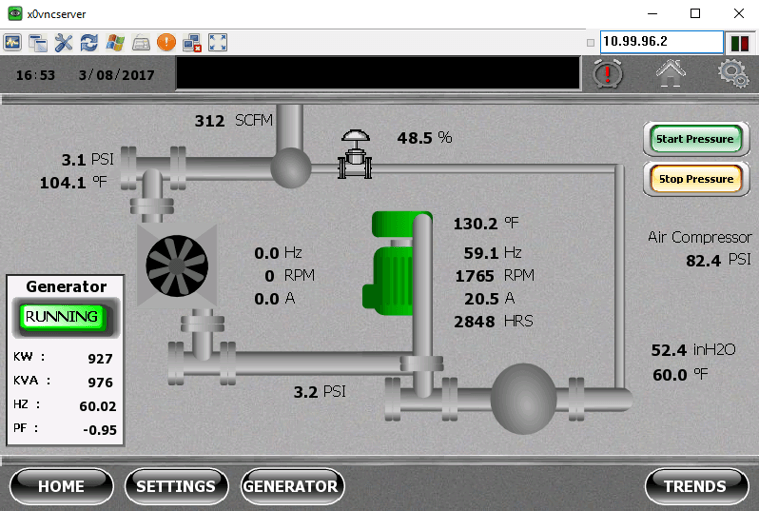
Every piece of data doesn’t need to be crammed on the main screen. I recommend adding only the most crucial, actionable, high-level information on your main HMI. Detailed information should always require a drill-down to additional SCADA screens, or direct portals to specific devices.
If your landfill gas monitoring system is designed well, operators will be productive, freeing up time to do more performance analysis, and spend less time hunting for critical information buried in the monitoring system.
4. Alarm Only When Necessary
SCADA’s greatest benefit can also be its downfall. Alarms identify abnormalities, potential equipment failures, electrical faults, and capacity overloads. They provide crucial information that minimizes the risk of unplanned downtime…but sometimes the system gives it at the worst times.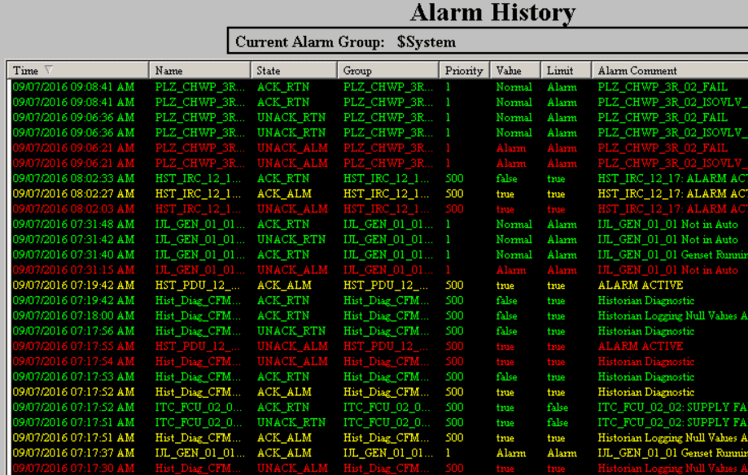
Too much SCADA alarm noise will create operator apathy. Just think of how annoying spam emails are. You just start deleting them without really looking at the contents. It’s the same with incorrectly designed SCADA alarms.
Alarms should only signal an abnormal condition, never confirm a normally running process. After all, what do oxygen alarms and barometric pressure alarms really tell you? There’s a weather system coming in? You can’t do anything about the weather, so stop alarming on it!
When hundreds of events (which require no action) can occur each day for every one critical alarm, there’s too much noise in the system for alarms to be meaningful. Eventually, a mission-critical alarm will get buried.
Remember: alarms should always signal an operator to action.
5. Form Consistent Alarm Messages
Inconsistent alarming messages are one of my personal pet peeves. How many times have you received an alarm message and had no idea what the message meant?
Today’s automation systems make it very easy to configure alarms. Most systems will, by default, compose alarm messages using the point name and alarm condition. But if the point name doesn’t follow a naming convention familiar to the owner/operator, the operator has to spend extra time interrogating the system just to figure out what’s wrong.
Here’s a great example of three common alarm formats that mean the same thing:
T1 LL Alarm
Tank 1 LowLow Limit Alarm
Fuel Oil Tank #1 approaching LL Limit
I recommend using the custom alarm message field, and configuring the message based on standard terminology understood by all operators.
Consider the types of devices used to view alarm messages. Will operators be viewing the alarms on their phones? To be safe, keep messages short and to the point. Only explain exactly what the alarm recipient needs to know: the problem, and the action to follow.
6. Change the Operator’s View of SCADA
The operator/owner disconnect can sometimes cause problems in landfill gas operation. This difficulty to align goals and objectives often extends to the SCADA system.
For example, the owner’s goal is long term profitability, but the operator often interprets that as keeping the site up 7/24/365, no matter what. The result? Because the operator thinks the owner wants the site online 100% of the time, he alerts the owner to each problem. The owner gets annoyed at the small disturbances, as it’s obvious to him it makes most financial sense just to shut the site down and fix the issue.
It’s not a very healthy relationship, and it can actually affect the way the operator views the landfill gas monitoring data on the SCADA screen. Help operators understand maintenance is better on the weekend. Help them understand price signals are more important than output.
The key here is making sure everyone understands the main goals of the plan, because what you measure is what you get.
7. Conduct Preventative Maintenance
Preventative maintenance is sometimes not part of a landfill gas owner’s plan or processes, and slips through the gaps. In some cases, there’s not a set maintenance plan for specific devices.
SCADA data gives the information required for operators to make the crucial call to shut down plant operations ahead of schedule to avoid poor performance or equipment failure. By monitoring and logging turbine hours, for example, operators can see when generator maintenance should be scheduled based on system specifications and plan accordingly.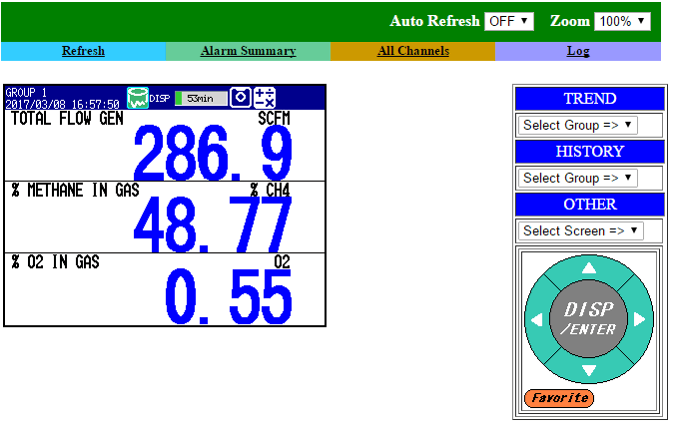
The data you gather can help determine when you reach 10,000 hours on routine maintenance tests for:
- Fuel in vs. energy out
- Environmental (NOx sensors) efficiency changes
- CH4
- Oxygen
- Nasties
In addition, device maintenance alerting is one of the best benefits you could possibly build in to your landfill gas monitoring system to help maintain every piece of critical equipment at your landfill gas plant. Receiving those alerts helps you get in front of signals before they become issues.
8. Optimize Reporting
SCADA is more than real-time status, set-point adjustment, trending, and alarms. The system also acts as a report generator of all the data you’ve collected from your system.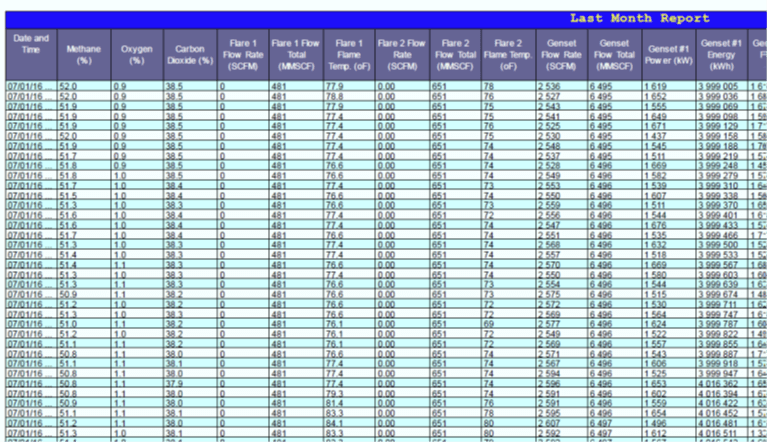
- With on-demand reports, operators can run elegant, pre-defined SCADA reports showing daily snapshots, activity, or summaries. They can drill-down to specific raw values, or be as high-level as you need.
- With scheduled reports, pre-defined reports can automatically be emailed every day, week or month to any person with an email address. This is also a great resource for compliance reporting.
- Reports can also be triggered based on a condition. For example, maybe you want a report emailed to you when you get within 90/60/30 days of a scheduled maintenance event. The report may show a chart showing the last 90 days of run hours versus date and showing the forecasted date at which you would hit the required maintenance interval.
Customized reporting is something your system integrator should be able to help you configure. A good best practice to keep in mind when creating custom reports is to stick to your KPIs (see #1)
9. Use Remote Access
Owners and operators of landfill gas to energy plants are constantly looking for ways to reduce operating costs. By providing authorized users with the ability to manage their systems remotely via computer, cell phone, or tablet, an operator can minimize the amount of onsite personnel required to operate and maintain a facility. Additionally, this capability can be used to access the system and view real-time status when out in the field, say the blower skid or the flare skid.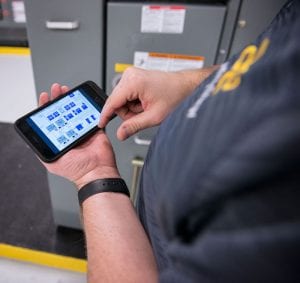
Remote access allows for semi-unattended operation. This means fewer operators are required, reducing costs and maximizing the ROI on a SCADA system.
When designing your system, you will need to determine if you will allow set point adjustment or controls to be executed via remote capability. If you are going to allow this level of remote capability, we recommend you consider additional security to ensure that only your personnel are able to access the system. Two-factor authentication schemes and advanced industrial firewalls are some options to further protect your system
10. Use SCADA to Tweak Performance, Adjust Variables and Monitor Changes
When optimizing landfill gas monitoring, owners and operators can’t take a back seat to plant operation. Landfills are living, breathing, non-static environments. Owners and operators must identify changes that occur (via the SCADA system) and adjust based on those changes.
Each landfill is built different, and active variables are site-specific, but some common variables include:
- Rain
- Barometric pressure
- Temperature
- Trash input
For example, SCADA can be configured to adjust the blower to pull harder or softer based on BTU.
Ultimately, these little adjustments will help you run as close to your permit as possible and use as little gas as possible, to make as much energy as possible, to produce as little pollutant as possible.
11. (Bonus) Understand Individual Responsibilities of the System Integrator and the Owner
Specifying, designing, programming, and operating a SCADA system is a two-way street. Both the system integrator and the owner must understand each other’s goals in order to succeed.
Integrator to Owner
It’s the integrator’s job to make the owner aware of SCADA’s full set of capabilities. It’s also their job to design a system that syncs with the way the way the owner plans to operate and maintain the plant. No matter what the owner’s goals are, the SCADA system should focus on providing usable information, rather than just parroting data. Ultimately, it should make the owner and operator’s life easier.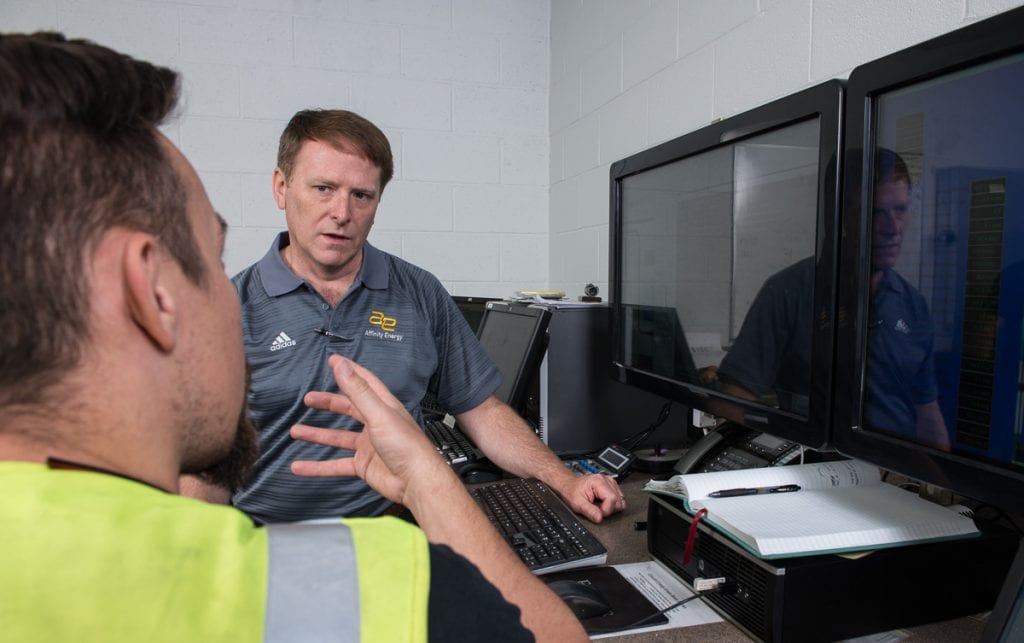
Owner to Integrator
It’s the owner’s job to help the system integrator comprehend what’s most important to them at their plant. Identify the trends or flags that signal maintenance, and help the integrator prioritize alarms based on the potential impact to the landfill gas site’s primary goals.
Ultimately, an owner shouldn’t get a screen that shows trends and alarms. They should receive a priceless addition to their landfill gas monitoring and controls system that easily helps them make better operating decisions.
Get a no obligation SCADA consultation to see if this landfill gas monitoring technology is right for your organization.
Allan D. Evora
Allan D. Evora is a leading expert in control systems integration and has worked in every capacity of the power and energy management project lifecycle. With over 25+ years of industry experience, he has worked at Boeing Company and General Electric before establishing Affinity Energy, Charlotte, NC in 2002. Allan is an alumnus of Syracuse University with a B.S. in Aerospace Engineering, a graduate of the NC State Energy Management program, and qualified as a Certified Measurement & Verification Professional (CMVP).
Throughout his career, Allan has demonstrated his passion for providing innovative solutions. In 1990, he developed FIRST (Fast InfraRed Signature Technique), a primary design software tool used to rapidly assess rotary craft infrared signatures. In 2008, Allan was instrumental in developing Affinity Energy's Utilitrend, a commercially available, cloud-based utility resource trending, tracking, and reporting software.
Additionally, Allan has been instrumental in large-scale integration projects for energy companies and mission critical facilities, such as data centers, hospitals, airports, and manufacturing. He has worked with SCADA systems since the early '90s and has a passion for instrumentation, controls, and actionable information, which drives him to incorporate openness, simplicity, and integrity into every design.

